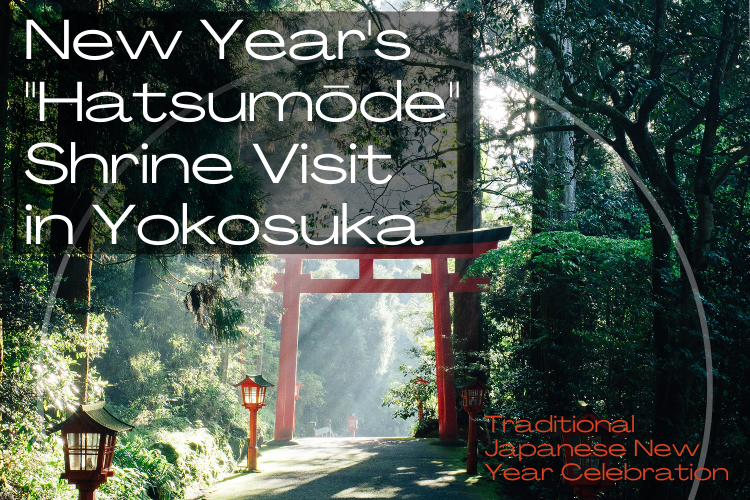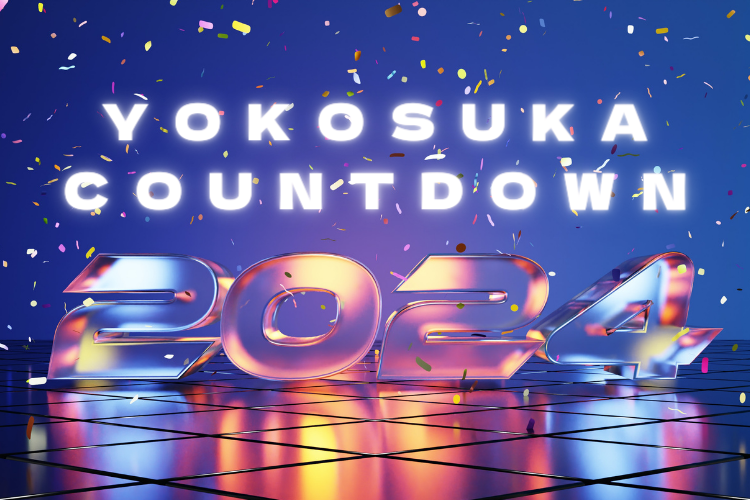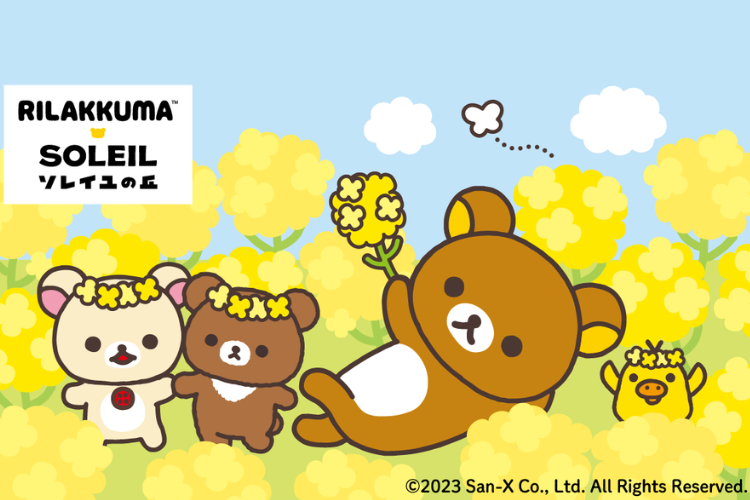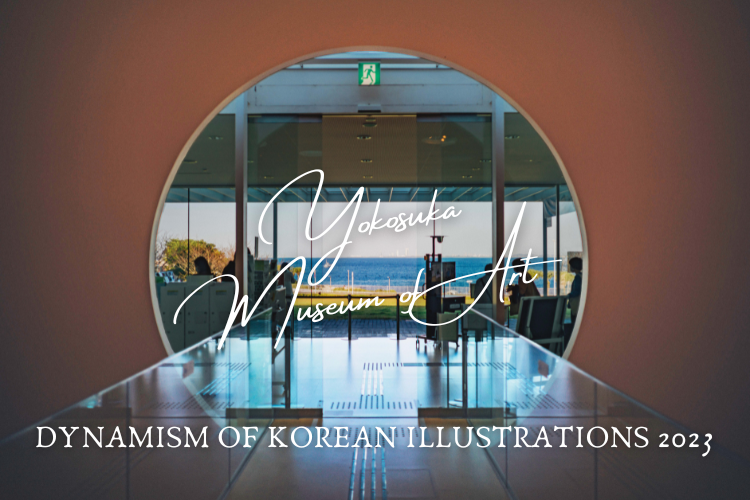New Year’s “Hatsumōde” Shrine Visit in Yokosuka: Traditional Japanese New Year Celebration

The Japanese New Year begins with “Hatsumōde,” a tradition where people visit shrines or temples to pray for good fortune in the coming year. This article introduces New Year’s “Hatsumōde” Shrine Visit in Yokosuka, along with proper worship etiquette at temples and shrines. We’ll also explore the origins of “Hatsumōde” and trivia to enhance your enjoyment of this traditional New Year’s practice.
- About New Year’s “Hatsumōde”
- Differences Between Temples and Shrines
- The Proper Etiquette for Visiting Temples and Shrines in Japan
- Shrine Etiquette
- Temple Etiquette
- “Hatsumōde” Trivia
- 10 Best spots: New Year’s “Hatsumōde” Shrine Visit in Yokosuka
- Hashirimizu Shrine
- Higashi Kano Shrine
- Kaminari Shrine
- Kurihama Tenjinsha Shrine
- Suwa Grand Shrine
- Suwa Shrine
- Kurihama Hachiman Shrine
- Kamoi Hachiman Shrine
- Kasuga Shrine
- Neno Shrine
- Afternote
- Nearest Activities
About New Year’s “Hatsumōde”
“Hatsumōde” (初詣, hatsumōde) marks the initial visit to a Buddhist temple or Shinto shrine at the onset of the Japanese New Year. The primary motives for visiting temples and shrines include engaging in religious practices, offering New Year’s prayers, and enjoying sightseeing. Major shrines across Japan often witness lengthy queues during this festive period.

Differences Between Temples and Shrines
Purpose of Establishment
- Temples are places for people to study Buddhist teachings, engage in spiritual practices, and attain enlightenment.
- Shrines, on the other hand, serve as places of worship for deities. They are often located in remote areas, as they are dedicated to gods and may not be as accessible to people.
Names of Key Buildings and Decorations
- The main hall where the principal Buddhist deity is enshrined in a temple is called the “Hondo” (main hall). In a shrine, this place is known as the “Honden” (main hall).
- Temples typically have elaborate decorations visible to the public, while shrine buildings tend to be less adorned. However, the inner sanctum of a shrine’s main hall may feature intricate and beautiful decorations not visible to the public eye.
Handling of Monetary Offerings
- Monetary offerings at temples are referred to as “O-bosatsu” or “O-sen,” representing a form of giving to accumulate merit in Buddhist practice.
- Shrines accept offerings known as “Shuho-ryo” or “Hatsumo-ryo,” often associated with the first harvest of the year. This practice is rooted in the belief that offering the first fruits or products of the year enhances the divine power within the shrine.
The Proper Etiquette for Visiting Temples and Shrines in Japan
In Japan, the customs and etiquettes associated with visiting temples and shrines during various occasions, especially the traditional New Year’s practice known as “Hatsumōde,” can be both fascinating and intricate. Understanding the differences in approach is essential for an enriching cultural experience. Let’s delve into the unique etiquettes associated with these sacred places.

Shrine Etiquette
1. Approach
When passing through the torii gate, bow slightly, around 15 degrees, and avoid walking in the center as it is considered the path of the gods. Show respect to the deities, and it is customary for people to walk along the sides.
2. Cleansing
Procedure for Temizu (Hand Water Ritual):
- Hold the ladle with your right hand, scoop water, and pour it over your left hand to purify it.
- Switch the ladle to your left hand and pour water over your right hand.
- Hold the ladle again with your right hand, take a small amount of water in your left palm, bring it to your mouth, rinse your mouth quietly, and spit it out. Do not put your mouth directly on the ladle.
- After pouring a little water on your left hand, tilt the ladle to let the remaining water flow down the handle, then place it back in its original position.
3. Offering
Place your offering (Osaisen) in the offertory box as an expression of gratitude to the gods. The most popular amount is 5 yen, known for its auspicious association with “en” (connection).
When making an offering, do so gently without tossing it. Either gently place it into the box or quietly throw it in from a lowered hand position around your waist.
How to Make a Wish Is it better to have only one wish?
After making an offering, instead of immediately saying, “I wish for [something],” take a moment to report on and express gratitude for the past year. Afterward, you can offer new wishes and prayers. While there are no limits on the number or content of wishes, focusing on specific desires is recommended to receive blessings. It is also said to be beneficial to provide your name and address when praying.
4. Bell Ringing
Ring the temple bell if available to announce your presence to the deity.
5. Prayer — “Ni-hai Ni-hakushu Ichi-hai”
《 Step One 》Two Bows (Ni-hai):
- Stand with proper posture.
- Perform a deep bow, bending at the waist to approximately 90 degrees, and then straighten up.
- Repeat this deep bow a second time.
《 Step Two 》Two Claps (Ni-hakushu):
- Bring both hands together in front of your chest, with the fingertips of the right hand slightly below the left.
- Clap your hands twice.
《 Step Three 》One Bow (Ichi-hai):
- Lower both hands to your sides.
- Perform another deep bow, bending at the waist.
- If you have wishes, this is the moment to express them.
After offering a prayer, a slight bow adds an extra touch of courtesy, enhancing the respectful etiquette.
Note: The method of shrine visits may vary, with some places, like Izumo Taisha, following the “Two Bows, Four Claps, One Bow” format. Please adhere to the specific practices of each shrine.

Remember to maintain a quiet and respectful atmosphere during your visit, and adhere to the specific rituals of each place.
Temple Etiquette
1. Approach
When passing through the torii gate, bow slightly, around 15 degrees, and avoid walking in the center as it is considered the path of the gods. Show respect to the deities, and it is customary for people to walk along the sides.
2. Cleansing
Procedure for Temizu (Hand Water Ritual):
- Hold the ladle with your right hand, scoop water, and pour it over your left hand to purify it.
- Switch the ladle to your left hand and pour water over your right hand.
- Hold the ladle again with your right hand, take a small amount of water in your left palm, bring it to your mouth, rinse your mouth quietly, and spit it out. Do not put your mouth directly on the ladle.
- After pouring a little water on your left hand, tilt the ladle to let the remaining water flow down the handle, then place it back in its original position.
3. Offering
Place your offering (Osaisen) in the offertory box as an expression of gratitude to the gods. The most popular amount is 5 yen, known for its auspicious association with “en” (connection).
When making an offering, do so gently without tossing it. Either gently place it into the box or quietly throw it in from a lowered hand position around your waist.
How to Make a Wish Is it better to have only one wish?
After making an offering, instead of immediately saying, “I wish for [something],” take a moment to report on and express gratitude for the past year. Afterward, you can offer new wishes and prayers. While there are no limits on the number or content of wishes, focusing on specific desires is recommended to receive blessings. It is also said to be beneficial to provide your name and address when praying.
4. Bell Ringing
Ring the temple bell if available to announce your presence to the deity.
5. Prayer
Express respect by performing “Gassho Teirei” — placing your hands together in a prayer position while bowing.
After offering a prayer, a slight bow adds an extra touch of courtesy, enhancing the respectful etiquette.
Note: For temple visits, the procedures can differ based on the sect and temple. Follow the specific practices of the temple you are visiting.

Remember to maintain a quiet and respectful atmosphere during your visit, and adhere to the specific rituals of each place.
“Hatsumōde” Trivia
Did the Tradition of Hatsumōde Originate from Railway Company Promotion?
The term “Hatsumōde” is said to have been created by railway companies during the Meiji era. To boost passenger numbers during the quiet New Year period, railway companies initiated promotions like “Let’s go to Hatsumōde.” Originally, New Year’s was a time to welcome and enshrine ancestral spirits at home. While the practice of “Tsuitachi-mairi,” visiting shrines monthly on the first day, existed since the Edo period, the current widespread Hatsumōde tradition was not as prevalent.

Distinguishing “Honden” and “Haiden”
“Honden” is where the deity is enshrined, while “Haiden” is where people worship. Since the deity is considered something not to be seen, Shinto priests generally cannot enter the “Honden.” In cases where the deity is a natural object like a mountain or rock, or when the Kaguraden serves as both “Haiden” and “Honden,” the distinction may vary.
The Mysterious Origin of Torii Gates
While torii gates have been present in Japan since the Heian period, their exact purpose and origin remain unclear. Theories suggest influences from gateways like the “Torana” in Indian temples and “Huabiao” stone columns in Chinese palaces. Additionally, there’s a belief that torii gates derive from the idea that souls of the deceased transform into birds. Shrines with rows of torii gates, creating a tunnel effect, are often found in Inari shrines.

The Origin of Temizuya is the Purification Ritual of Misogi
Pronounced as “temizuya” or “chozuya,” this is a simplified version of the purification ritual known as “Misogi,” where impurities are cleansed in rivers or seas before worship. It specifically refers to the place for cleansing hands and mouth before shrine visits.
Komainu: Not Exactly Dogs!
Komainu are mythical creatures, not your typical “dogs.” Properly, those with closed mouths and horns are called “Komainu,” while those with open mouths are “Shishi.” Together, they are known as “Shishi Komainu,” acting as guardians to protect shrines from evil. Additionally, various animal statues like foxes, mice, and cows in shrines represent “Shinshi” or divine messengers, revealing the deity worshipped.

Are Omikuji Meant to be Taken Home?
Omikuji, a means of understanding the deity’s will, has a long history, even appearing in the “Nihon Shoki.” Originally used in selecting shoguns, it involved shaking a paper with written phrases alongside an “o-fuda” (Figure 4). The attached item was believed to represent the deity’s will. While omikuji can be obtained in both temples and shrines today, they were initially filled with classical poetry, requiring monks or Shinto priests to explain. As they are considered gifts from the deity, taking them home is customary. However, if unfavorable results are received or one wishes to leave a prayer, it’s acceptable to tie them at designated places within the shrine grounds.

10 Best spots: New Year’s “Hatsumōde” Shrine Visit in Yokosuka
Through articles, have you gained a deeper understanding of Japan’s Hatsumōde? Now, let me introduce you to the top 10 recommended spots for New Year’s “Hatsumōde” Shrine Visit Yokosuka.
Hashirimizu Shrine
Hashirimizu Jinja (走水神社) is a Shinto shrine that enshrines Japan’s legendary figure, Prince Yamato Takeru no Mikoto, and his consort, Princess Ototachibana-hime no Mikoto. The shrine’s origin is linked to an episode during the journey of Prince Yamato Takeru, the son of Emperor Keikō, to Kazusa Province.
It is said that Princess Ototachibana-hime calmed the turbulent sea by throwing herself into it, as recorded in the “Kojiki” and “Nihon Shoki.” Princess Ototachibana-hime, known for her deep affection and trust in Prince Yamato Takeru, is revered as a deity. Hashirimizu Jinja has gained recognition as a spiritual place for fulfilling romantic aspirations and enhancing feminine energy.

- Location: 2 Chome-11-5 Hashirimizu, Yokosuka, Kanagawa (2 minutes on foot from the bus stop in front of the shrine, taking the bus towards Kannonzaki)
- Visitation Hours: From midnight on the 1st day
- Hashirimizu Shrine Official Website
Higashi Kano Shrine
East and West Kano Shrines face each other at Uraga Port. Admiral Kaishu Katsu performed “Mizugori” water purification before crossing the Pacific on the Kanrin Maru. The guardian lion-dogs (komainu) at East Kano have closed mouths; West Kano’s are open. A theory suggests a complementary pair: closed-mouth komainu at East Kano and open-mouthed at West Kano.
Kano Shrine, representing the fulfillment of wishes, is a widely sought-after power spot. It is renowned for its blessings in wish fulfillment, fostering positive relationships, and promoting prosperity in businesses. Wearing the sacred jewel from West Kano in the amulet bag of East Kano is believed to attract positive connections. The two Kanos are connected by the Uraga Ferry, spanning across Uraga Port.

- Location: 2 Chome-21-25 Higashiuraga, Yokosuka, Kanagawa (8 minutes by bus from Uraga Station, take off at Shinmachi)
- Visitation Hours: From midnight on the 1st day
- New Year’s Day Festival: Assembly at 9:30, Shoden (ritual to open the main hall) at 10:00 on the 1st day
- Kano Shrine Official Website
Kaminari Shrine
The shrine, established in the first year of Jōhei (931 AD), venerates the deity of fire and thunder, although it is also associated with Sugawara no Michizane. Michizane, initially feared as the “God of Thunder,” later became renowned as the deity of scholarship. The shrine, originally named Ikazuchi Shrine, had its main hall relocated from Tsukijima to its present location in the 9th year of Tenshō (1581), with the involvement of the ruler Ashikaga Noto no Kami.
According to legend, when the shrine in Tsukijima was destroyed by lightning, the women who had taken refuge inside emerged unscathed, while the nearby evergreen trees were charred. This miracle led to the shrine being revered as a guardian against disasters and a protector in times of crisis, earning it the affectionate name “Kaminari Shrine.”

- Location: 1 Chome-9-9 Oppamahoncho, Yokosuka, Kanagawa (5 minutes on foot from Oppama Station)
- Visitation Hours: From midnight on the 1st day
- Staircase Regulation and Security Measures in Place
- Kaminari Shrine Official Website
Kurihama Tenjinsha Shrine
The shrine, dedicated to Sugawara no Michizane, the deity of learning, is frequented by many students seeking blessings for academic success, as well as for improvement in various skills, fulfillment of wishes, and protection against forgetfulness.
At the shrine, there is a practice of stroking a wish-granting cow. Devotees stroke parts of the cow corresponding to their ailments or areas they wish to heal, believing that it brings the divine favor of Sugawara no Michizane. Additionally, carefully stroking the cow’s body and head while making a wish is considered beneficial.
Furthermore, there is a fertility dog at the shrine. Followers believe that by stroking the dog based on their Chinese zodiac sign, they can receive blessings for fertility, safe childbirth, and child-rearing.

- Location: 5 Chome-19-3 Kurihama, Yokosuka, Kanagawa (10 minutes on foot from Kurihama Station)
- Visitation Hours: From midnight on the 1st day (Sweet sake (Amazake) distribution is planned)
- Kurihama Tenjinsha Shrine Official Website
Suwa Grand Shrine
On March 23, 1380, in the 2nd year of the Kōryaku era, Miura Sadamune established the Suwa Shrine at Mt. Furuya in Yokosuka as the guardian deity. Located at the entrance of Nagamine Castle, this marked the beginning of the shrine.
The Suwa Grand Shrine, originating from Shinshu (now Nagano Prefecture), is believed to bring blessings such as enhancement of martial prowess, prayers for victory, abundant harvests, bountiful fishing, and safety in navigation. Notably, the shrine offers specific blessings tailored to the fishing industry.

- Location: 34 Midorigaoka, Yokosuka, Kanagawa (5 minutes on foot from Shioiri Station)
- Visitation Hours: From midnight on the 1st day
Suwa Shrine
In the heart of Yokosuka City, there are two rare shrines, Suwa Grand Shrine and Suwa Shrine, both dedicated to Suwa Myojin, making them unique on a national scale.
Suwa Myojin has been revered since ancient times as a deity of martial prowess and prosperity in agriculture and development. The precincts of these shrines also house other subsidiary shrines, including Ōwashi Jinja known for the “Tori-no-Ichi” market, Inari Jinja for prosperous business, and Suiten-gū for maritime safety and protection during childbirth. As a result, many worshippers visit these shrines to offer their prayers.

- Location: 3 Chome-17 Wakamatsucho, Yokosuka, Kanagawa (1 minute on foot from Yokosuka Chuo Station)
- Visitation Hours: From midnight on the 1st day
- Suwa Shrine Official Website
Kurihama Hachiman Shrine
Kuriohama Hachimangu Shrine is a Shinto shrine located near Keikyu Kuriohama Station, dedicated to Hachiman-sama. The shrine is renowned for the painting of a celestial dragon on the ceiling of its main hall. The divine blessings of the shrine include good fortune and protection from misfortune. Additionally, to the left of the main hall, there is a power stone. This stone is believed to bring benefits for health prayers.

- Location: 2 Chome-17-9 Kurihama, Yokosuka, Kanagawa (5 minutes on foot from Kurihama Station)
- Visitation Hours: From midnight on the 1st day
- Kurihama Hachiman Shrine Official Website
Kamoi Hachiman Shrine
In the fourth year of the Jisho era (1180), Minamoto no Yoritomo entered Kamakura, laying the foundation for the shogunate. In this endeavor, Miura Yoshizumi and Yoshimori, with their military achievements, later assumed the names Arasuke Yoshizumi Miura-no-suke and held control over the district. Yoshimori became the deputy chief of the samurai-dokoro, marking the height of the Miura clan’s prosperity.
During this period, Tametora Shiro Yoshiharu, also known as Tadamitsu, served as the lord of Kamoi in our village and was renowned for his martial prowess, becoming a pillar of the Miura family. It is said that Yoshiharu, on behalf of the Minamoto clan, invited and enshrined Kamakura’s Tsurugaoka Hachimangu Shrine in the first year of the Yowa era (1181).
The “Shinpen Sagami Fudoki” records, “This is the guardian deity of the Hachiman Shrine village, with its festival held on the 15th of August. It is recorded that in the sixth month of the first year of Yowa, Lord Yoritomo visited the county and, on that occasion, the shrine was recommended.”

- Location: 3 Chome-5-5 Kamoi, Yokosuka, Kanagawa (Right after getting off the bus from Uraga Station to Kamoi)
- Visitation Hours: From midnight on the 1st day
- Kamoi Hachiman Shrine Official Website
Kasuga Shrine
Kasuga Shrine was originally located on Sarushima and believed to be established during the Heian period. The former Kōgō region was a Fugiwara clan estate, and it is said that a divine spirit was enshrined from Nara’s Kasuga Taisha. As the Great Deity of the Ten Islands, including Sarushima and nine surrounding islets, ceremonies were conducted with participants crossing to the islands.
However, during the late Edo period, Sarushima became a military zone, and in Meiji 17 (1884), the main hall was relocated to its current location, restricting public access to Sarushima. The main hall collapsed in the Great Kanto Earthquake of Taisho 12 (1923) and was reconstructed in Showa 11 (1936).
The name “Sarushima” doesn’t originate from the presence of monkeys; instead, it comes from the legend of Nichiren, who, while drifting by boat from the Boso Peninsula, was guided to the island by a white monkey.

- Location: 3 Chome-33 Miharucho, Yokosuka, Kanagawa (3 minutes on foot from Horinouchi Station)
- Visitation Hours: December 31st, starting at 11:30 PM
Neno Shrine
Neno Shrine welcomes visitors with Komainu (lion-dog statues) created during the Tenpo era. The enshrined deity is Okuninushino-Mikoto, also known as Okuninushi or Daikoku-sama, a god who governs the earth. The shrine is said to have been established in the second year of the Jokyu era (1220) and was later relocated to Hashima in the first year of the Gen’na era (1681), which is now part of a U.S. military base.
Okuninushino-Mikoto is revered for various virtues, including fostering prosperity in commerce and industry, ensuring household fortune, facilitating matchmaking, and promoting the prosperity of descendants. The historical and divine significance of Neno Shrine has made it a beloved place among many people.

- Location: 4 Chome-55 Shioiricho, Yokosuka, Kanagawa (3 minutes on foot from Shioiri Station)
- Visitation Hours: From midnight on the 1st day
Afternote
Has your understanding of the traditional Japanese New Year’s ‘Hatsumōde’ Shrine Visit in Yokosuka deepened? We hope you will usher in the new year beautifully. Thank you in advance for your continued support of the Yokosuka Travel Guide next year as well.







